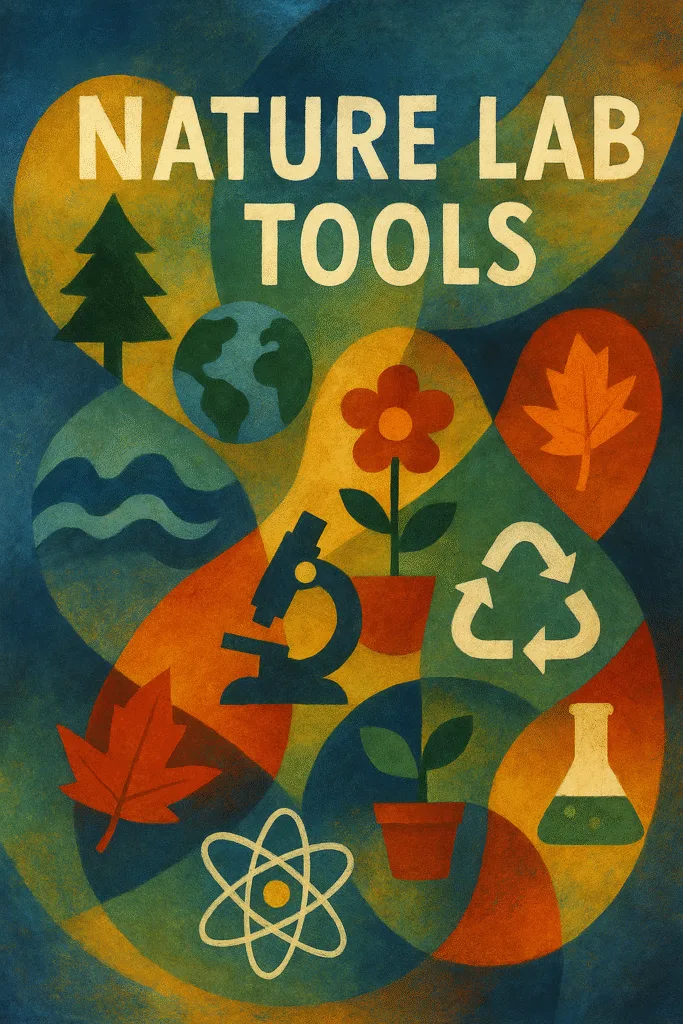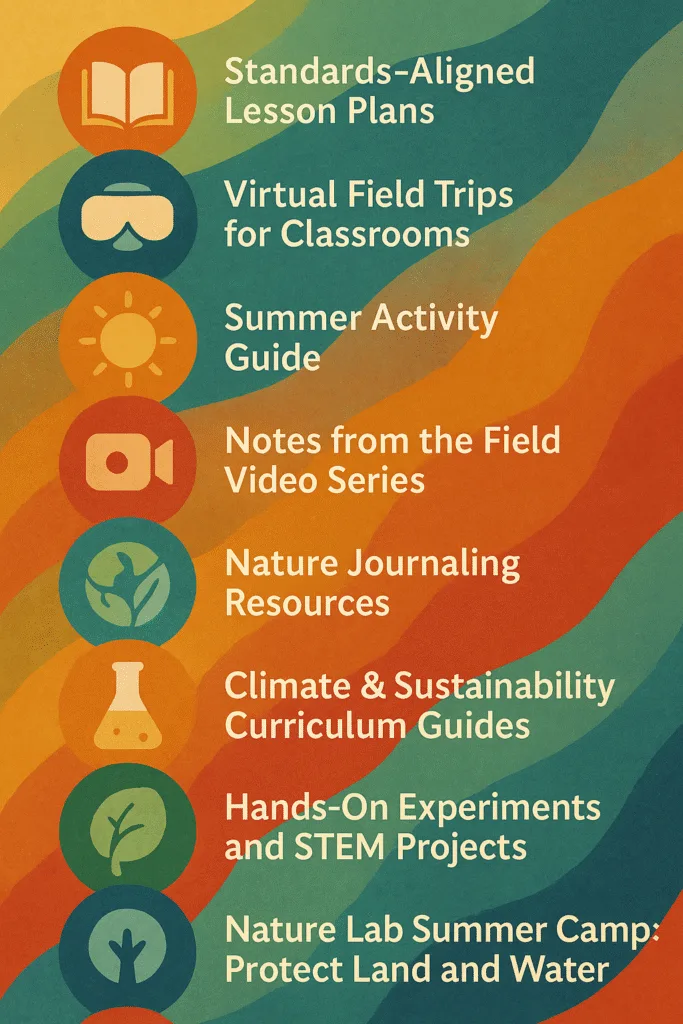
Table of Contents
- Standards-Aligned Lesson Plans
- Virtual Field Trips for Classrooms
- Summer Activity Guide
- Notes from the Field Video Series
- Nature Journaling Resources
- Climate & Sustainability Curriculum Guides
- Hands-On Experiments and STEM Projects
- Nature Lab Summer Camp: Protect Land and Water
- Climate Heroes: The Power of Trees – Educator Guide
- Spanish-Language and Bilingual Content
The Nature Conservancy’s Nature Lab is a free environmental education platform for schools and families. It’s built for real-world learning: climate science, biodiversity, sustainability, and conservation are explained through ready-to-use lessons, activities, and media. Below are 10 of the most useful, direct-linked resources available for K–12 educators and families looking to teach with impact.

1. Standards-Aligned Lesson Plans
Nature Lab provides full-length, grade-specific lesson plans tied to Next Generation Science Standards. Topics include biodiversity, food systems, climate action, freshwater ecosystems, and more. Lessons are printable, ready to use, and include assessments, vocabulary, and student handouts. Great for classrooms, homeschoolers, or after-school enrichment.
2. Virtual Field Trips for Classrooms
These 360° interactive videos bring students into real ecosystems—from coral reefs to forests to farms. Each virtual field trip includes educator guides, discussion questions, and post-viewing activities. Perfect for science units on ecosystems, conservation, or climate impacts. Can be used in classrooms or remote learning settings.
3. Summer Activity Guide
Designed for use during school breaks, this printable guide offers 10 outdoor, screen-free learning activities. Families can go on leaf walks, make recycled art, build a pollinator station, or explore their local ecosystem. Each activity includes instructions, reflection prompts, and minimal material needs.
4. Notes from the Field Video Series
This video series brings science and conservation careers to life through real-world stories. Each short film features Nature Conservancy scientists and staff working on challenges like kelp forest mapping, salmon habitat restoration, and green infrastructure. Use it to inspire students or supplement career exploration units.
5. Nature Journaling Resources
Nature journaling helps students slow down, observe, and reflect. This resource introduces families and teachers to basic journaling techniques, what to include in entries, and how to build it into outdoor time. It supports both science skills (observation, recording data) and personal connection to nature.
6. Climate & Sustainability Curriculum Guides
This guide, “Understanding Climate Change,” provides a complete teaching unit on how human actions impact climate and what can be done to build sustainable communities. Includes maps, real data, student worksheets, and extension activities. Strong fit for middle and high school science or social studies classes.
7. Hands-On Experiments and STEM Projects
Nature Lab offers several printable science investigations. One standout project lets students test the water retention capacity of different soils, simulating runoff and filtration. Projects are designed for small groups or home science exploration, often using household materials.
8. Nature Lab Summer Camp: Protect Land and Water
This activity invites families to conduct a biodiversity count in their backyard or local park. Students observe, tally, and research plants and animals in their ecosystem, learning what healthy habitats need. Includes observation sheets and guided discussion questions.
9. Climate Heroes: The Power of Trees – Educator Guide
This printable guide helps students investigate how trees help clean the air, regulate temperature, and reduce carbon. The activities are designed to show the real climate value of trees, both globally and locally. Great for Earth science, urban planning, or sustainability units.
10. Spanish-Language and Bilingual Content
Nature Lab offers translated resources including lesson plans and activity guides. Ideal for ESL teachers, bilingual classrooms, or Spanish-speaking families. Materials cover biodiversity, ecosystems, sustainability, and more.
From backyard biodiversity projects to virtual coral reef dives, Nature Lab equips educators and families with high-quality environmental learning tools. Every item on this list is free, easy to use, and based on the latest conservation science. Whether you’re building a lesson or planning a weekend activity, these resources are designed to connect learners to nature—and give them the tools to protect it.